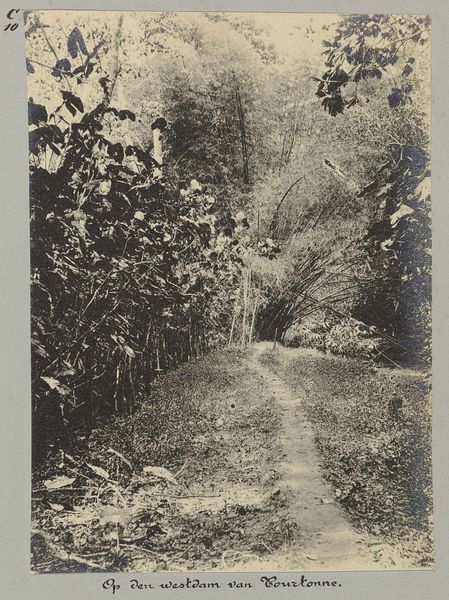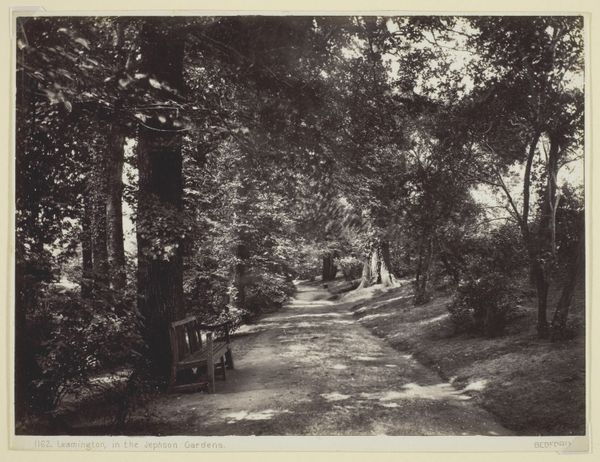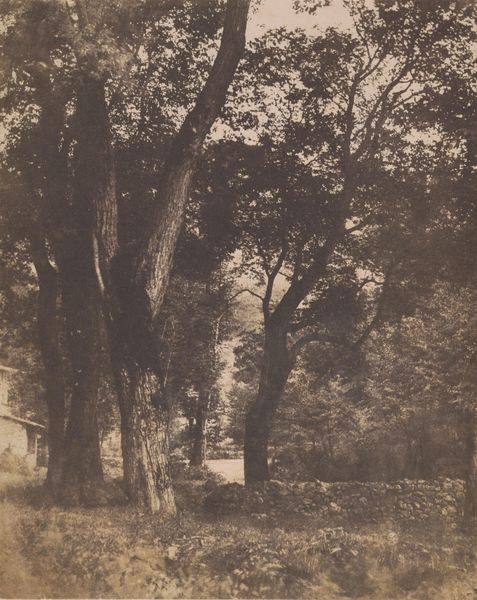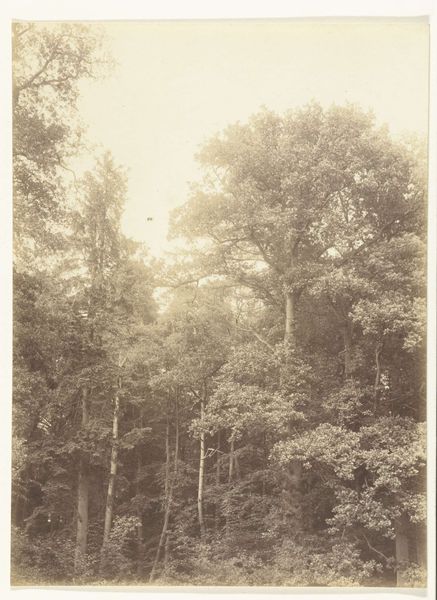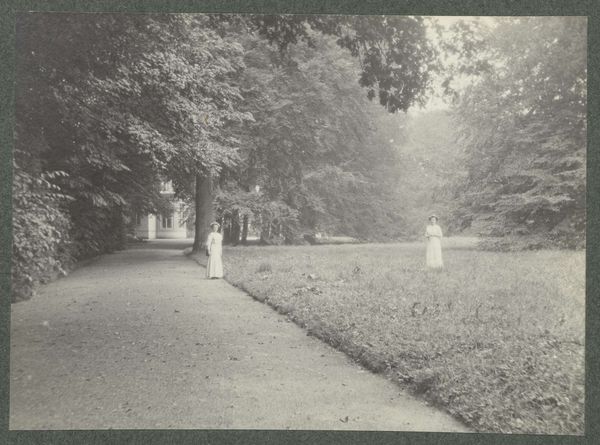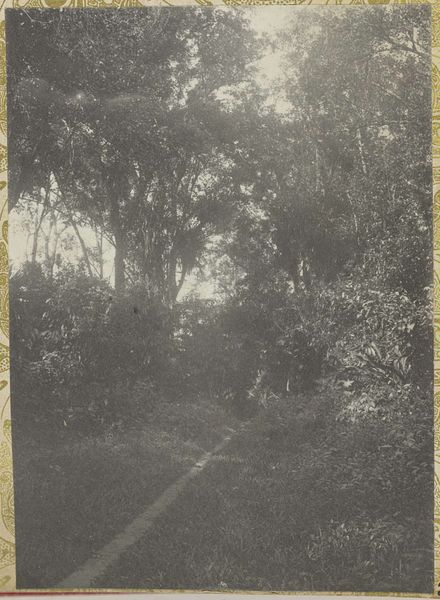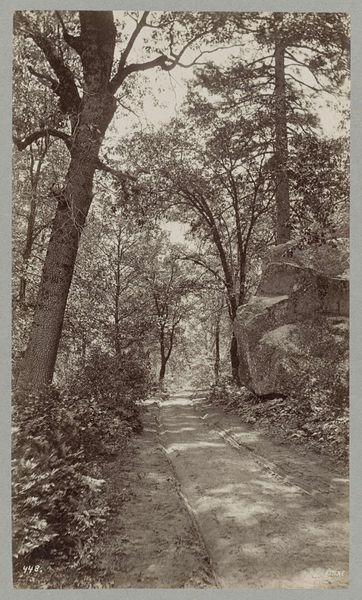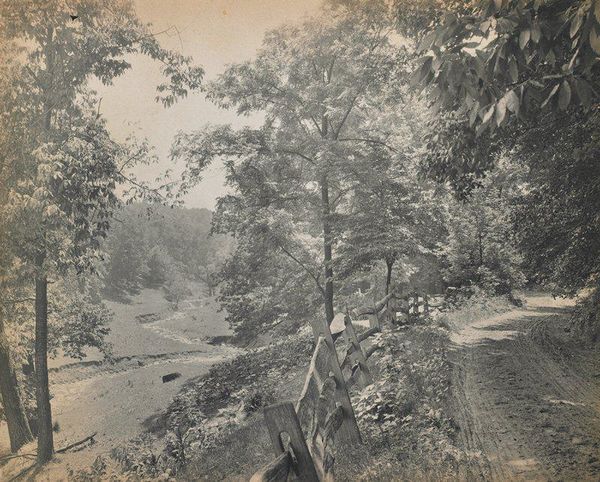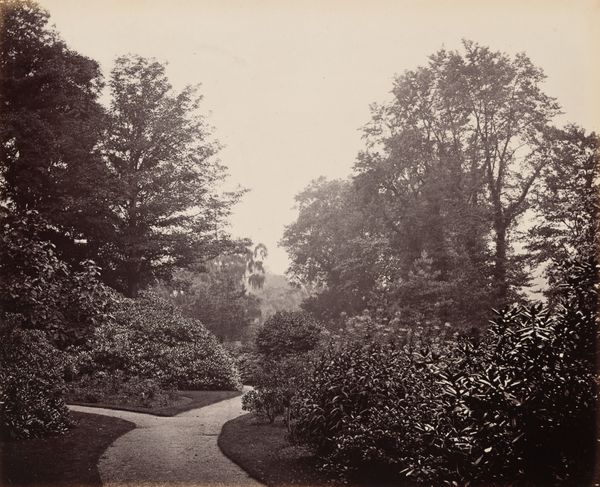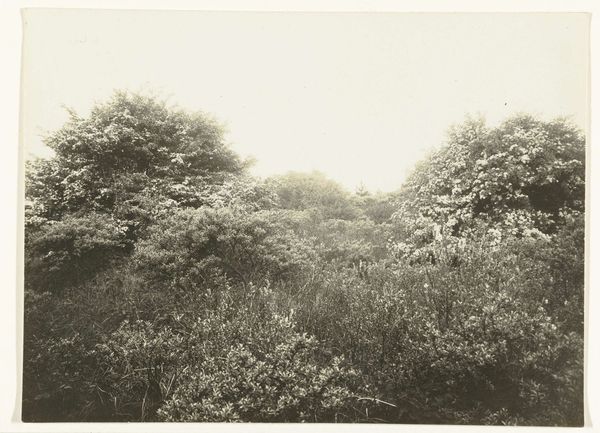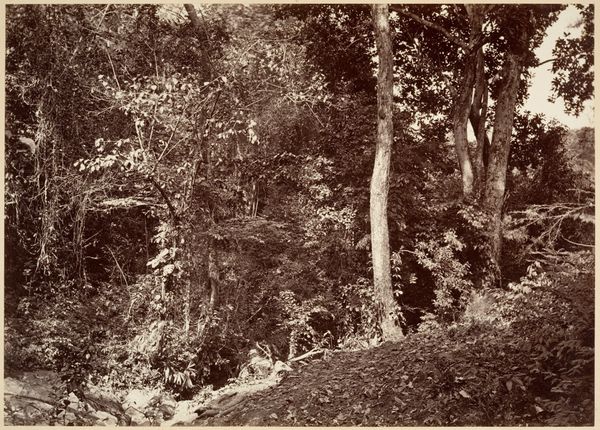
Vrouw in een tuinpad bij bloemdragende struiken op landgoed Pauw 1913
0:00
0:00
geldolphadriaankessler
Rijksmuseum
photography
#
portrait
#
pictorialism
#
organic shape
#
landscape
#
photography
Dimensions: height 73 mm, width 98 mm, height 198 mm, width 263 mm
Copyright: Rijks Museum: Open Domain
Editor: So, this is Geldolph Kessler’s “Woman in a Garden Path with Flowering Shrubs at Pauw Estate,” from 1913. It’s a photograph, and it strikes me as incredibly romantic, almost like a scene from a dream. The woman is so small compared to the towering flowers and foliage, but also ethereal in that bright dress. What do you see in this piece? Curator: It’s interesting you say dream-like. For me, the enduring image here is one of threshold and the power of cultivated spaces. What does a garden *mean* in 1913? What did it mean to *him*? Kessler positions this woman almost as a spirit, nearly swallowed by the abundant growth. It evokes a kind of Arcadia, but one claimed and ordered by humanity. Note how the path leads deeper into the embrace of nature, suggesting an invitation, or perhaps even a dare. Editor: A dare? That’s intriguing. I hadn’t thought of it that way. So, it's less about beauty and more about the cultural context of gardens at that time? Curator: Beauty is a construction of symbols, after all. Think about the cultural implications of the ‘estate’ itself. Land ownership. Privilege. Kessler, by framing her so diminutive in all that botanical exuberance, seems to comment on her *belonging*, her authorized presence amidst that manufactured wildness. She gains importance not just from being a beautiful figure in that garden, but also embodies wealth, and prosperity that created it. Editor: I see what you mean! It completely shifts my understanding of the photo. Thank you, I will think about this tension and relationship to gardens when looking at art going forward. Curator: Exactly. The symbolism around even the most everyday scenery can be profound.
Comments
No comments
Be the first to comment and join the conversation on the ultimate creative platform.
